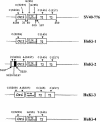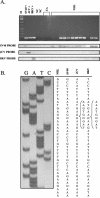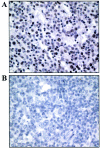Emergent human pathogen simian virus 40 and its role in cancer
- PMID: 15258090
- PMCID: PMC452549
- DOI: 10.1128/CMR.17.3.495-508.2004
Emergent human pathogen simian virus 40 and its role in cancer
Abstract
The polyomavirus simian virus 40 (SV40) is a known oncogenic DNA virus which induces primary brain and bone cancers, malignant mesothelioma, and lymphomas in laboratory animals. Persuasive evidence now indicates that SV40 is causing infections in humans today and represents an emerging pathogen. A meta-analysis of molecular, pathological, and clinical data from 1,793 cancer patients indicates that there is a significant excess risk of SV40 associated with human primary brain cancers, primary bone cancers, malignant mesothelioma, and non-Hodgkin's lymphoma. Experimental data strongly suggest that SV40 may be functionally important in the development of some of those human malignancies. Therefore, the major types of tumors induced by SV40 in laboratory animals are the same as those human malignancies found to contain SV40 markers. The Institute of Medicine recently concluded that "the biological evidence is of moderate strength that SV40 exposure could lead to cancer in humans under natural conditions." This review analyzes the accumulating data that indicate that SV40 is a pathogen which has a possible etiologic role in human malignancies. Future research directions are considered.
Figures







References
-
- Arrington, A. S., and J. S. Butel. 2001. SV40 and human tumors, p. 461-489. In K. Khalili and G. L. Stoner (ed.), Human polyomaviruses: molecular and clinical perspectives. Wiley-Liss, Inc., New York, N.Y.
-
- Ashkenazi, A., and J. L. Melnick. 1962. Induced latent infection of monkeys with vacuolating SV-40 papova virus: virus in kidneys and urine. Proc. Soc. Exp. Biol. Med. 111:367-372. - PubMed
-
- Atwood, W. J. 2001. Cellular receptors for the polyomaviruses, p. 179-196. In K. Khalili and G. L. Stoner (ed.), Human polyomaviruses: molecular and clinical perspectives. Wiley-Liss, Inc., New York, N.Y.
-
- Bergsagel, D. J., M. J. Finegold, J. S. Butel, W. J. Kupsky, and R. L. Garcea. 1992. DNA sequences similar to those of simian virus 40 in ependymomas and choroid plexus tumors of childhood. N. Engl. J. Med. 326:988-993. - PubMed
Publication types
MeSH terms
Grants and funding
LinkOut - more resources
Full Text Sources
Other Literature Sources

